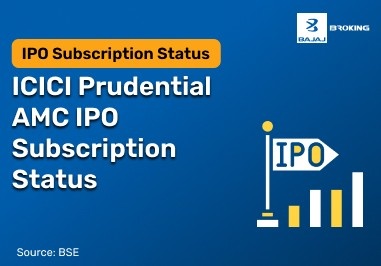Forex exchange or forex trading simply involves exchanging or trading different world currencies. Individuals, national banks, brokers, and several other groups take part in this exchange. This investment in the global trading of currency can generally be made via currency futures and the cash market. Currency futures involve when you enter into a formal agreement for the sales or purchase of a currency on a pre-set date and price. Alternatively, the cash market or spot market helps you with immediate sales or purchases of currencies. However, in India, you are only allowed to engage in currency futures for forex trading. You can engage in trading by simply opening a forex trading account using a brokerage firm.
However, it is important to understand that simply engaging in trading is not equivalent to success. Instead, you need to maintain your focus and consistency. Also, you need to have a clear understanding of popular strategies of forex trading and how they work. Understanding these forex trading strategies can help you plan entry and exit points and do much more based on your needs and risk appetite.
Wondering what these forex trading strategies are and how do you choose one? Well, stay tuned as we unravel different strategies for forex trading, their features, and much more. Thus, helping you choose a strategy that helps you enhance your returns.
Before you start learning about different strategies for forex trading, it is important to understand that no strategy fits all. Instead, your forex trading strategy should be customized based on your needs, and factors like time dedicated to trading, currency pair, market position, and so on.
Scalping Strategy
Scalping is a short-term strategy where investors aim to earn profits from short and frequent trades. Investors engage in ‘n’ number of short trades and plan their entry and exit in minutes and even lesser amounts of time to benefit from the market's small price fluctuations.
The emphasis of the strategy is to make as many trades with even little gains. In fact, investors generally rely on high leverage, which might increase the potential losses as well. The scalping strategy is a good formula for individuals willing to trade even in high-volume periods. You simply need to stay focused.
Day Trading Strategy
If you're someone who wants to engage in short-term trading but scalping looks too fast and frequent to you, then you may try your hands on day trading strategy. As the name suggests, this strategy generally involves one trade per day. The objective is to earn via the intraday price fluctuations.
You need to closely monitor the market, and have a thorough understanding of market risks and technical tools like chart patterns and more to recognise these short-term opportunities.
Swing Trading Strategy
The swing trading strategy is another short-term strategy. However, the trade placement using the strategy is entailed for a few days or weeks. Thus helping the traders to benefit from greater variations in the price. Also, when using a swing trading strategy, a trader holds their positions for comparatively extended periods, thus, allowing them to avoid the frequent ups and downs of the market.
Additionally, when following a swing trading strategy, you need not be consistent with your market monitoring. This means if you're looking for a short-term strategy that is comparatively less hectic, where you can do daily monitoring in a short time with chart patterns and more, then you may consider giving this strategy a try.
Position Trading Strategy
If you're someone looking for a long-term forex trading strategy, then you may consider exploring a position trading strategy. The emphasis is on identifying major moves or fluctuations in the market over a while. The general belief behind the strategy is that the value of the currency pair will eventually appreciate. Individuals using this strategy hold their positions for months, or even years, to benefit from the market trends.
Individuals employing a position trading strategy need to be calm, patient, and disciplined. Also, you should not be very much affected by the market's short-term fluctuations and gains.
Trend Following Strategy
Another prominent strategy for forex trading is trend following strategy. The formula or rationale behind this is to recognise popular established market trends and then enter the market following the same trends or directions.
The general belief behind the trend-following strategy is that the prices keep moving in a similar direction to the trend. You may use different technical analysis tools like trend lines, moving averages, momentum oscillators, and so on, to identify established trends and then plan your entry positions. This helps you simply capitalize on the potential momentum and profits.
Range Trading Strategy
As the name suggests, the range trading strategy is where the aim is to make profits from price fluctuations but within a particular channel or range. Individuals following a range trading strategy try to recognise resistance and support levels, which helps them identify the positions where prices generally tend to bounce. This helps them purchase bear support levels and sell the same near resistance levels before price reversals.
Individuals following the strategy may use technical analysis tools to understand oversold and overbought conditions. However, it is also important to effectively manage your risks with stop-loss orders. Additionally, you should also be readily prepared for any potential breakouts hinting towards a range’s end.
Breakout Trading Strategy
Bollinger's breakout strategy comes in handy in recognising the beginning of a new trend. It suggests that a breakout in any direction can signal a new trend. Traders may take assistance from tools like candlestick patterns, moving averages, and more to recognise a potential breakout. What makes this strategy a go-to formula for several traders is that it is suitable for a variety of assets. Further, they are easy to identify and understand and help you capitalize on the market momentum.
Carry Trade Strategy
One of the other popular forex trading strategies is the carry trade strategy. Traders following this formula aim to capitalize on the differences between the interest rates of different currencies. Here, individuals simply borrow using a currency with a low interest rate and then eventually invest the same in a currency with a high interest rate. Thus, enhancing the profits via the interest rate differentials. It also means individuals not only earn interest on their currency but also benefit from the stability of the exchange rate. Typically, a carrying trade strategy has a currency pair, where one currency has a lower interest rate and the other one is high-yielding.
News Trading Strategy
There is no denying the fact that the forex market is significantly influenced by a variety of economic factors and events. Thus, forex traders need to understand the significance of such events and their impact on the forex market. Here comes the news trading strategy. The news trading strategy is a technique where traders design their trading formulas following news updates. For example, traders usually take into consideration events like announcements of new interest rates, data, and much more.
Traders employing a news trading strategy heavily rely on an economic calendar that aids in planning their trading style and activities. You can also use previous records to recognise established patterns and make informed choices accordingly. However, it is also important to understand that with this strategy comes a higher risk because of the volatility that comes with this news and events.
Retracement Trading Strategy
A retracement trading strategy is a technique where traders may recognise a temporary reversal in price in an established trend. Such pauses can be of huge help to traders. They can help you plan your entry point, that too, at cost-effective prices. However, it is also important not to confuse retracements with reversals.
Traders may identify these retracements using a variety of technical tools Fibonacci retracements. This can help you mark the resistance and support levels understanding the pauses and reversals in price movements. Once you understand the same, you can place your stop-loss orders accordingly to enhance your profits and manage your risks.
Grid Trading Strategy
Grid trading strategy is another popular forex trading strategy where traders can place several stop-entry orders. Now, this can be done below and even above the current price. This ultimately helps build a grid of several orders, signalling and entered position irrespective of the direction of the market.
The aim behind using the grid trading strategy is simple: to identify a trend before confirming your entry position. Now, traders may use and understand resistance and support levels to
Momentum Trading Strategy
Momentum's trading strategy, as the name suggests, aims to enhance and make profits from the existing market momentum or trends. This generally includes purchasing assets whose prices are rising and selling those whose prices are falling. The rationale behind the strategy is to capitalize on the existing market trends. Traders can consider understanding long and short-term market trends and momentum to plan their trading strategies.
Having a forex trading strategy is important to calculate your trading moves, activities, and much more. However, you simply cannot choose a forex trading strategy just because of its popularity. Instead, try considering factors like risk tolerance, financial goals, trading frequency, and much more to choose a strategy that suits you the best. Once you properly understand and choose a suitable strategy, the same can help you enhance your profits in the forex market and emerge as a successful trader.














